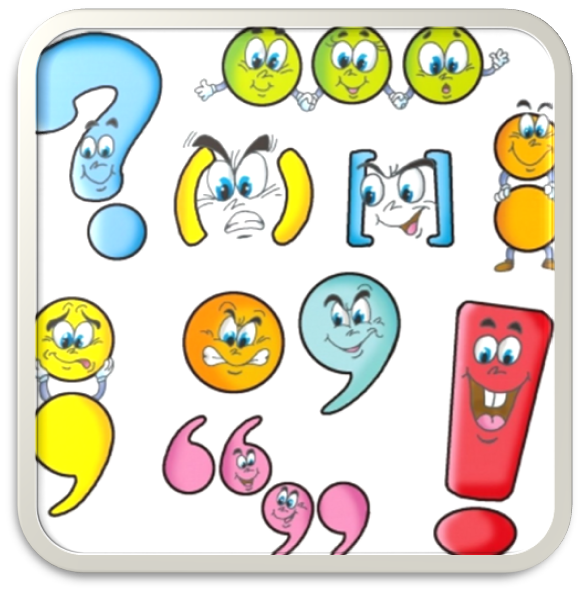Chinese punctuation marks form a complete system that complements Chinese characters.
In 1918, Chen Wangdao proposed in his article “The Innovation of Punctuation” that “punctuation can be used as a divine tool for writing”, believing that the relationship between text reform and punctuation reform is external and internal, and that punctuation can add the finishing touch and make writing more vivid.

In 1919, the first session of the Preparatory Committee for the Unification of Mandarin passed the “Proposal for the Implementation of New Punctuation Symbols”, which was approved and promulgated by the Ministry of Education of the Beiyang Government in 1920.
In the subsequent use process, new punctuation symbols were constantly modified and supplemented, and have been widely used in Chinese for over 100 years.
Classical Chinese does not have strict punctuation marks, but its ability to read lies in the brevity of sentences, the symmetry of sentence structure, and the extensive use of pronouns and modal particles.
From the late Qing Dynasty to the early Republic of China to the May Fourth period, people gradually realized that the separation between classical Chinese and real spoken language had seriously hindered social development, while vernacular Chinese could hardly meet the needs of expression solely relying on language and written symbols themselves, resulting in the emergence of punctuation marks.
The promotion of new punctuation marks was part of the New Culture Movement, and Chen Wangdao was one of the pioneers who advocated the use of new punctuation marks.
He used at least 12 punctuation marks in the Chinese first translation of the Communist Manifesto. New Youth magazine was one of the first publications to use modern punctuation.
The articles published by literary revolution pioneers such as Hu Shi, Lu Xun, Qian Xuantong, and Liu Bannong in “New Youth” extensively imitated Western punctuation.
In 1918, Lu Xun published a series of works such as “The Diary of a Madman” in “New Youth”. While excelling in mastering vernacular Chinese, he successfully used a set of punctuation marks.
Internationality is a common feature of punctuation in modern languages of various countries, and Chinese punctuation is the result of the fusion of traditional sentence reading symbols in China and Western punctuation symbols.
In addition to punctuation, Western languages also consider spacing between words, changing fonts, capitalizing letters, and segmenting as punctuation functions. For example, in English, there is a gap between words, book and newspaper names are indicated in italics, and proper names are capitalized.
While China adopts punctuation, it also introduces the method of line segmentation. Chinese uses block characters and generally does not use spaces to segment words, but in some situations, such as newspaper headlines, spaces can be used to indicate pauses.
Chinese punctuation marks serve people’s facial expressions. With the richness and delicacy of people’s expressions, existing punctuation marks will have new uses and meanings, and new punctuation marks will continue to emerge.
Regardless of the changes, the use of punctuation should respect rules and achieve consistent processing to meet the needs of language expression.
The learning and application of punctuation marks is a long-term process and cannot be achieved overnight.

Firstly, teachers should pay more attention to punctuation teaching in their thinking and implement it in the daily explanation of each text, in the correction of each homework, as well as in each blackboard writing, PPT production, and lesson plan writing.
Strictly require oneself to use punctuation symbols correctly, and set an example for students to use language symbols in a standardized manner, so that they can gradually master more punctuation knowledge.
Secondly, organize campus cultural activities related to language and writing work, such as punctuation correction competitions, various essay competitions, and punctuation culture construction.
Only by having a “national standard awareness” from a young age and developing the habit of using language and written symbols in a standardized manner, can we avoid making jokes or causing significant losses due to the incorrect use of punctuation marks.
Improving the awareness of national standards among citizens is also a key and difficult aspect of national language and writing work.
The necessity and importance of correctly using Chinese punctuation marks can be seen from this.
In summary, teaching strategies for primary school Chinese punctuation can be explored from three aspects: stimulating students’ interest in learning punctuation, guiding students to master the correct use of punctuation, and enhancing students’ awareness of correct use of punctuation.
The small punctuation marks contain university knowledge, guiding students to use language and writing symbols in a standardized manner, not only serving exams but also supporting national language and writing work, which is conducive to improving the overall quality of national language and writing, and creating a good learning atmosphere and cultural environment.
